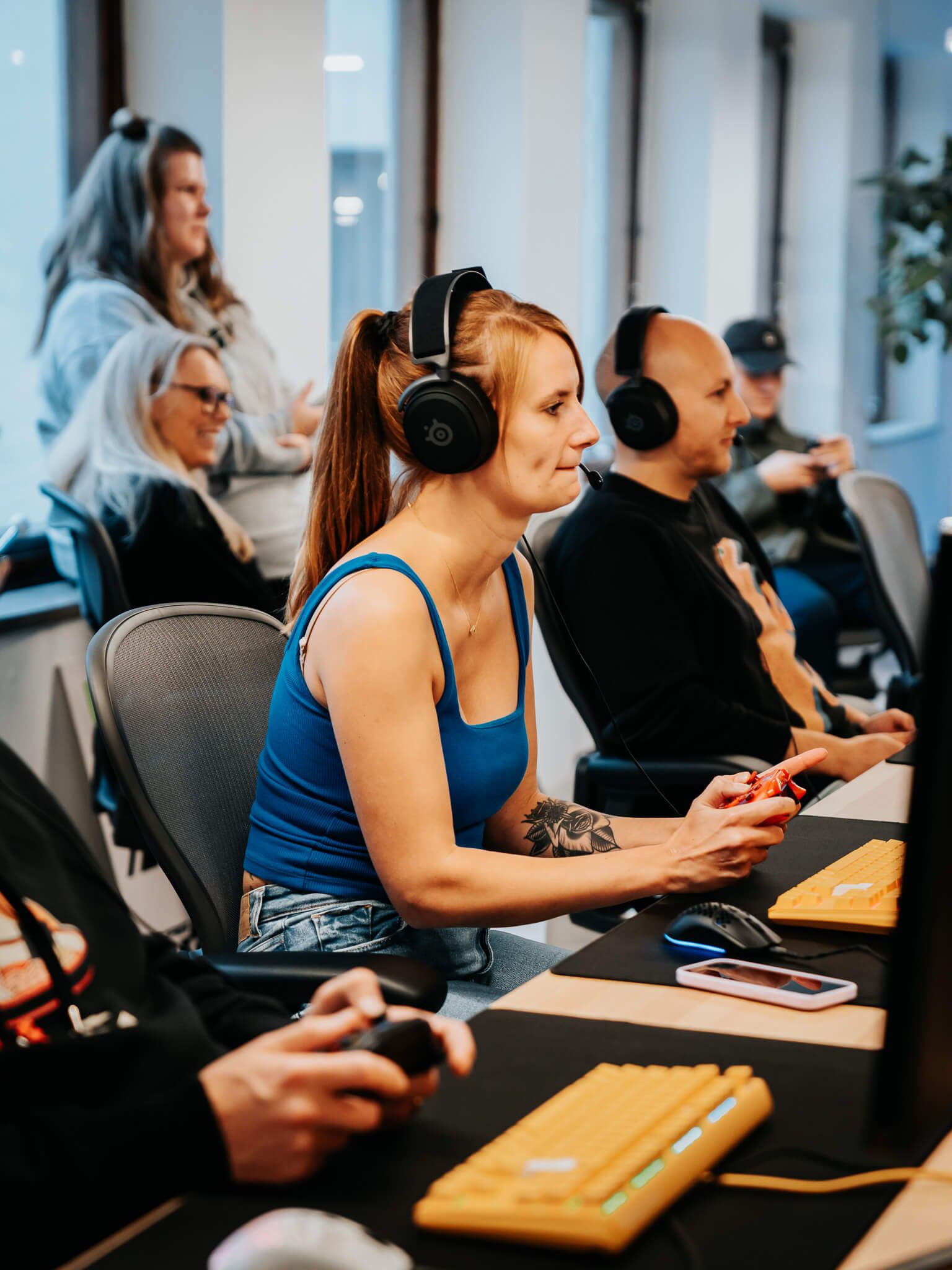
How to develop GOALS
We have one guiding principle: To build the game our players actually want, not the game we think they want.
It’s a good principle. Rock solid. Other things in our philosophy might be more… soft. And that’s actually the point. We have opened up the way we work to embrace change.
Constant change means constant decision-making. Big and small decisions need to be made all the time. All our decision-making is based on three things.
The three pillars of decision making
Developer intuition
A great game developer has an inherent understanding of what makes games tick and what defines a fun experience. The game developer creates the vision of what the product should be, and is also the only one who can continuously evaluate how the game is progressing.
User data
By investing in telemetry and collecting data on user behavior and game performance, the game developer will be able to see how players are interacting with the game. Paired with good analytic skills, the insights and learnings are direct and enable iterative improvements.
Player feedback
Creating a trusting relationship with the community and listening to their input is crucial. It keeps us honest and helps us challenge our own assumptions. What a player does in the game and what they think or want, are not always the same.
The amount of focus we put on each area will evolve over time, but our ambition is to strike a balance where all three of them have equal importance and are used to validate each other.
We build the most important parts first
Our high-level planning is based on breaking down the game into building blocks and laying them out next to each other. When we can identify the core functionality and see dependencies we have our order of execution.
Everything that’s deemed critical for the game will be our main focus until we are happy with the result. It could be a backend system, an in-game experience, or an art asset. The core of the game needs to be what it needs to be before we work our way outwards and add layers.
We make our community part of the development team
There are no better guides than the people who spend their time playing our game. We are gamers ourselves, but our preferences will always be limited to the people inside our walls.
To give our community power to influence the game, we want to really keep them involved during the entire duration of our development. They need to see the game evolve on a weekly basis and have their feedback acted upon. This means small and immediate adjustments.
Our ambition is to keep the game as in sync as possible between what our community plays and what is on our development machines. Our live service motto is to release often and release early.
We are happy to share unfinished work
Letting the outside world into our development process means that we must first let go of our fear to show anything but polished work.
We also understand that the path to the final product is anything but straight and we must keep asking ourselves: What is the cheapest and fastest way we can start learning?
With this in mind, the first step in building any part of our game is to get it into a playable and stable enough state to be presented to our community for early feedback.
Beats are our melody
Our main development unit is a beat. A beat is approximately three months long and our horizon for planning the work in greater detail.
A beat does not need to result in a major deliverable, since we release and iterate on new game features whenever they are ready. The end of a beat is simply when we take a long, hard look at our plans, keep ourselves honest about the state of things and act on identified development issues.
We plan for change
Our plans will be influenced by a large number of people outside of the company. The plans will inevitably change and as an effect, we need to always accept a certain level of uncertainty. Therefore our plan operates on two levels of detail.
Micro
The imminent development beats are planned in high detail, allowing our teams to handle the work using common agile methods and tools.
Macro
Longer horizon, big-picture only. Which parts of the game to build in what order. A rough timeline that doesn’t go into deeper detail until we get closer in time. High-level planning is easier to move around and lets us quickly understand the long-term effects of any change. Changes are less disruptive.
We are ambitious and realistic
We set ambitious goals. We are building a groundbreaking game and need to challenge ourselves every day. A good goal is hard to reach but never impossible.
Sometimes we will fall short. This is not a failure, but simply the nature of pushing for greatness. We adjust accordingly and keep being ambitious.
Jonas Runderg
COO